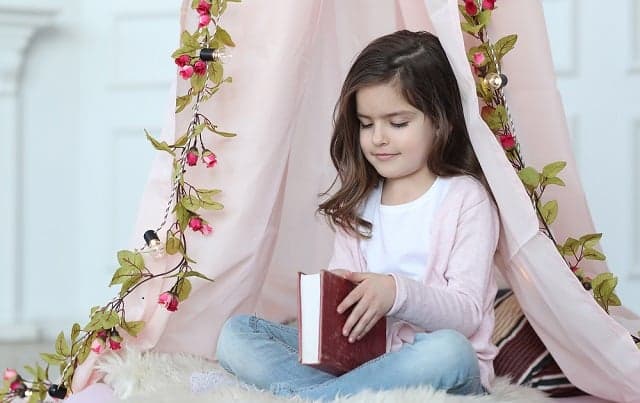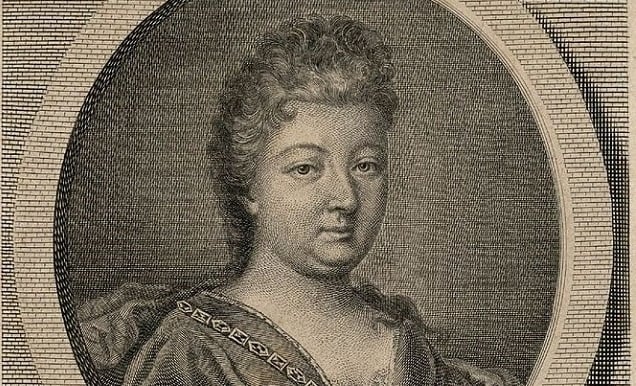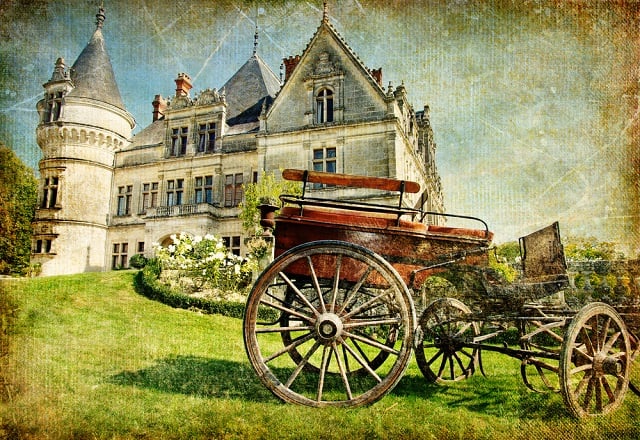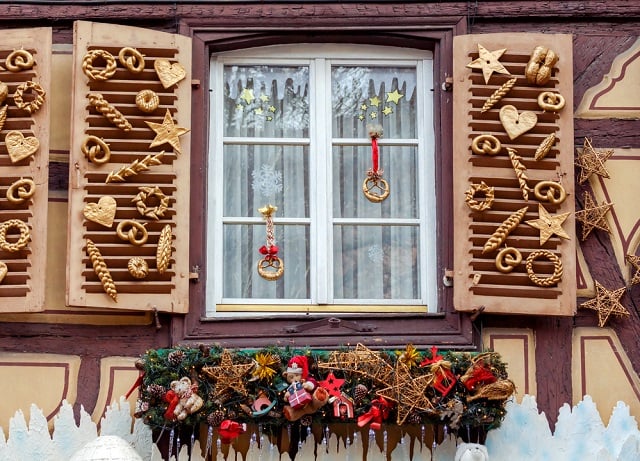The forgotten feminist history of the French fairy tale

Each year, tourists in their millions flock to France to visit Disneyland Paris, where - so the marketing material promises - "fairytales take flight".
But perhaps few visitors know that some of the tales that inspired Walt Disney’s films were first popularized in France by a group of non-conformist women writers in the 17th century. They used the stories as a way of subtly complaining about their husbands and critiquing King Louis XIV without being seen to speak out of turn.
The term ‘fairy tale’ is a translation of ‘conte des fées’, first coined by storyteller and noblewoman Madame d'Aulnoy, one of the women who helped popularize the tales that many are brought up with.
Her own biography has elements of the fantastic: aged just 15, she was kidnapped from the convent where she was being educated and forced to marry a wealthy Baron.
READ ALSO: The best books about Paris you need to read
He was 30 years her senior and known to have gambling and drinking problems, but the marriage was profitable for d'Aulnoy's father, who may have conspired in his daughter's kidnapping. D’Aulnoy and her mother were later suspected of a plot to have the Baron executed for treason, after which she fled across Europe before eventually returning to Paris.
It was there that she set up one of the first and most renowned literary circles - or salons, as they were named, after the upper class living rooms where the meetings were held. A select group of friends gathered to discuss the issues that mattered to them, such as love, marriage and politics, but as these were delicate subjects, it was convenient to disguise any criticisms within a fictionalized world.

Madame D'Aulnoy. Photo: Public Domain/Wikimedia Commons
Women were excluded from formal education at that time, and so the meetings were also used as a chance to improve their conversational and storytelling skills, taking it in turns to share their prepared works. They wrote in a variety of genres, from poems to plays, but the fairy tale lent itself particularly well to this style of narration.
Borrowing from the folk tales which had been passed on through the generations for centuries, the salonnières elevated the genre from bedtime story to bonafide work of literature, and were responsible for printing the oral tales for the first time in France.
D'Aulnoy's salon, which started in 1695, became the place to be for those on the French literary scene and she was nicknamed 'Clio' after the Greek muse for her storytelling skills. When she published the first known French fairy tale, The Island of Happiness, within a novel, she also coined the name of the genre.
A large number of the tales woven in the salons were variations on stories we still know today, and which had been around in multiple cultures beforehand: Sleeping Beauty, Cinderella, Puss in Boots, and Bluebeard.

Photo: Ivan_varyukhin/Depositphotos
But many of the tales are unrecognizable from Disney's versions.
D'Aulnoy and her contemporaries didn't write of fragile, naive princesses who must be shielded from danger, but of quick-witted women who battled the injustices they faced. Women were powerful, ruling over kingdoms and had the power to effect change.
This was a stark contrast to the real lives of many of the writers. One leading salonnière, Madame du Murat, was exiled over accusations of lesbianism and "shocking practices", while another, Madame de Villeneuve, was forced to request a separation of belongings from her husband of just six months after he squandered much of their joint fortune.
READ ALSO: Why French children's books might keep grown-ups awake at night
Another writer, Mademoiselle de La Force, wrote a collection of stories from a convent where she had been banished to for "impious" behaviour. In one tale, Fairer-than-a-Fairy, she wrote of a princess given that name due to her beauty, who is then kidnapped by fairies and sentenced to sweep a room which is cursed to grow dirtier and dirtier however much she cleans.
Marriage was frequently painted as a sinister trap in the tales, arranged by the girls' fathers or the result of a curse set by an evil fairy, and many tales depicted princesses using their cunning to get out of such an arrangement.

File photo: Maugli/Depositphotos
Another common theme was forbidden love, with princesses falling for ordinary peasant boys or even enchanted animals, reflecting the pressure upper class women felt to marry someone of their class. These tales often had a happy resolution, with the shepherd or animal revealing himself as a prince and the victim of a curse which transformed his outer appearance.
The original version of Beauty and the Beast, written by Madame de Villeneuve, has both these themes: in her tale, Beauty is cursed to marry a beast as punishment for her mother, a fairy, for falling in love with a human. But as you may have guessed, the beast is revealed to be a prince, who has been transformed into an ugly and stupid animal as part of another curse.
READ ALSO: The French beggar who wrote a best-selling book
Kings and queens reduced to poverty were also a popular subject. For example in d'Aulnoy's The White Cat, which could be seen as a thinly veiled criticism of Louis XIV's economic policy.
Though the stories of d'Aulnoy and her peers remained popular throughout the 18th century, by the 19th they had fallen out of fashion, with these versions of the classic tales often considered too shocking.

Fairy tale decorations in Colmar, France. Photo: pillerss/Depositphotos
Writer Charles Perrault, who attended the salons but who started writing several years after d'Aulnoy, instead went down in history as the 'father of the French fairytale'.
His collection of Tales and Stories of the Past with Morals was published with the subtitle Tales of Mother Goose - an acknowledgement of the generations of mothers and nursemaids who told such stories, not as a reference to the salonnières who had paved the way for his own work.
In Perrault's tales, sanitized versions written for upper class families, each was followed by a 'moralité' summarizing the lesson children were expected to draw from it. These complied with Catholic, conservative morals, and in contrast to the sharp, active heroines of the tales above, often emphasized the untold dangers awaiting young women in particular.
His version of Little Red Riding Hood, for example, concluded with the warning that children, “especially young girls, pretty, courteous and well-bred” should not speak to strangers.
A message, it seems likely, that d'Aulnoy, her peers, and their fictional heroines would have strongly disapproved of.
READ ALSO: Novel about killer nanny wins France's top literary gong
Comments
See Also
But perhaps few visitors know that some of the tales that inspired Walt Disney’s films were first popularized in France by a group of non-conformist women writers in the 17th century. They used the stories as a way of subtly complaining about their husbands and critiquing King Louis XIV without being seen to speak out of turn.
The term ‘fairy tale’ is a translation of ‘conte des fées’, first coined by storyteller and noblewoman Madame d'Aulnoy, one of the women who helped popularize the tales that many are brought up with.
Her own biography has elements of the fantastic: aged just 15, she was kidnapped from the convent where she was being educated and forced to marry a wealthy Baron.
READ ALSO: The best books about Paris you need to read
He was 30 years her senior and known to have gambling and drinking problems, but the marriage was profitable for d'Aulnoy's father, who may have conspired in his daughter's kidnapping. D’Aulnoy and her mother were later suspected of a plot to have the Baron executed for treason, after which she fled across Europe before eventually returning to Paris.
It was there that she set up one of the first and most renowned literary circles - or salons, as they were named, after the upper class living rooms where the meetings were held. A select group of friends gathered to discuss the issues that mattered to them, such as love, marriage and politics, but as these were delicate subjects, it was convenient to disguise any criticisms within a fictionalized world.

Madame D'Aulnoy. Photo: Public Domain/Wikimedia Commons
Women were excluded from formal education at that time, and so the meetings were also used as a chance to improve their conversational and storytelling skills, taking it in turns to share their prepared works. They wrote in a variety of genres, from poems to plays, but the fairy tale lent itself particularly well to this style of narration.
Borrowing from the folk tales which had been passed on through the generations for centuries, the salonnières elevated the genre from bedtime story to bonafide work of literature, and were responsible for printing the oral tales for the first time in France.
D'Aulnoy's salon, which started in 1695, became the place to be for those on the French literary scene and she was nicknamed 'Clio' after the Greek muse for her storytelling skills. When she published the first known French fairy tale, The Island of Happiness, within a novel, she also coined the name of the genre.
A large number of the tales woven in the salons were variations on stories we still know today, and which had been around in multiple cultures beforehand: Sleeping Beauty, Cinderella, Puss in Boots, and Bluebeard.

Photo: Ivan_varyukhin/Depositphotos
But many of the tales are unrecognizable from Disney's versions.
D'Aulnoy and her contemporaries didn't write of fragile, naive princesses who must be shielded from danger, but of quick-witted women who battled the injustices they faced. Women were powerful, ruling over kingdoms and had the power to effect change.
This was a stark contrast to the real lives of many of the writers. One leading salonnière, Madame du Murat, was exiled over accusations of lesbianism and "shocking practices", while another, Madame de Villeneuve, was forced to request a separation of belongings from her husband of just six months after he squandered much of their joint fortune.
READ ALSO: Why French children's books might keep grown-ups awake at night
Another writer, Mademoiselle de La Force, wrote a collection of stories from a convent where she had been banished to for "impious" behaviour. In one tale, Fairer-than-a-Fairy, she wrote of a princess given that name due to her beauty, who is then kidnapped by fairies and sentenced to sweep a room which is cursed to grow dirtier and dirtier however much she cleans.
Marriage was frequently painted as a sinister trap in the tales, arranged by the girls' fathers or the result of a curse set by an evil fairy, and many tales depicted princesses using their cunning to get out of such an arrangement.

File photo: Maugli/Depositphotos
Another common theme was forbidden love, with princesses falling for ordinary peasant boys or even enchanted animals, reflecting the pressure upper class women felt to marry someone of their class. These tales often had a happy resolution, with the shepherd or animal revealing himself as a prince and the victim of a curse which transformed his outer appearance.
The original version of Beauty and the Beast, written by Madame de Villeneuve, has both these themes: in her tale, Beauty is cursed to marry a beast as punishment for her mother, a fairy, for falling in love with a human. But as you may have guessed, the beast is revealed to be a prince, who has been transformed into an ugly and stupid animal as part of another curse.
READ ALSO: The French beggar who wrote a best-selling book
Kings and queens reduced to poverty were also a popular subject. For example in d'Aulnoy's The White Cat, which could be seen as a thinly veiled criticism of Louis XIV's economic policy.
Though the stories of d'Aulnoy and her peers remained popular throughout the 18th century, by the 19th they had fallen out of fashion, with these versions of the classic tales often considered too shocking.

Fairy tale decorations in Colmar, France. Photo: pillerss/Depositphotos
Writer Charles Perrault, who attended the salons but who started writing several years after d'Aulnoy, instead went down in history as the 'father of the French fairytale'.
His collection of Tales and Stories of the Past with Morals was published with the subtitle Tales of Mother Goose - an acknowledgement of the generations of mothers and nursemaids who told such stories, not as a reference to the salonnières who had paved the way for his own work.
In Perrault's tales, sanitized versions written for upper class families, each was followed by a 'moralité' summarizing the lesson children were expected to draw from it. These complied with Catholic, conservative morals, and in contrast to the sharp, active heroines of the tales above, often emphasized the untold dangers awaiting young women in particular.
His version of Little Red Riding Hood, for example, concluded with the warning that children, “especially young girls, pretty, courteous and well-bred” should not speak to strangers.
A message, it seems likely, that d'Aulnoy, her peers, and their fictional heroines would have strongly disapproved of.
READ ALSO: Novel about killer nanny wins France's top literary gong
Join the conversation in our comments section below. Share your own views and experience and if you have a question or suggestion for our journalists then email us at [email protected].
Please keep comments civil, constructive and on topic – and make sure to read our terms of use before getting involved.
Please log in here to leave a comment.